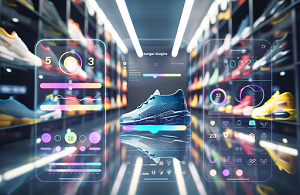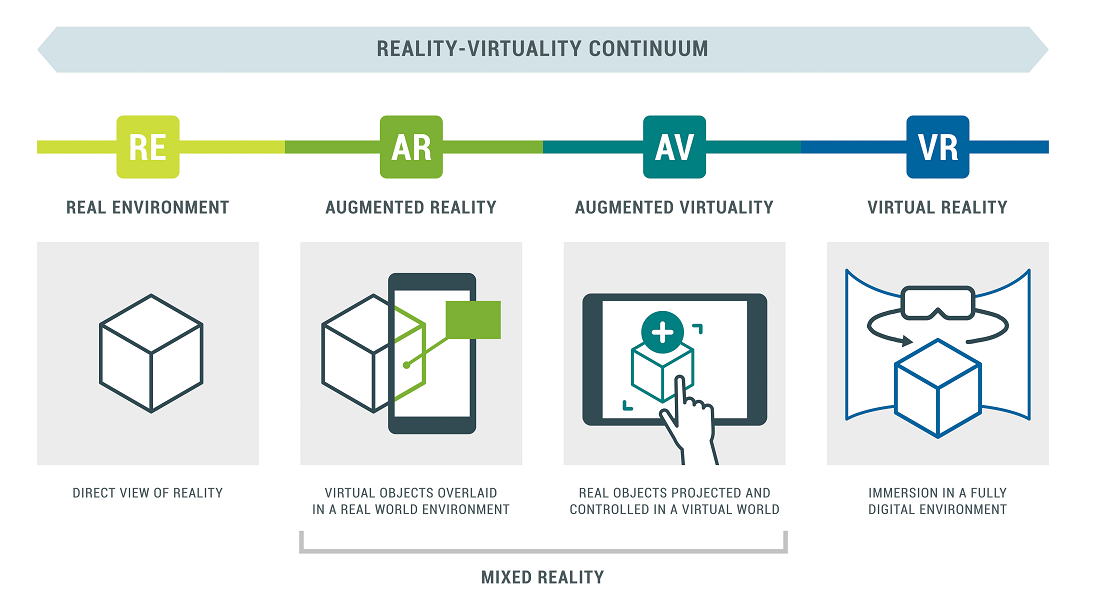Mixed reality experiences: Your Ticket to A $3 Trillion Emerging Market
4 minute read
The hyper-connected digital age has opened the door for emerging markets and mixed reality, augmented and virtual reality are leading the charge. A new report by McKinsey predicts that by 2030 the industry could be worth an eye-popping $3-4 trillion across sectors including eCommerce, virtual learning, advertising, and gaming.
And companies that choose to invest in the these growing markets now? They’ll be the ones that reap the rewards in the future. From branded virtual experiences to digital shopping, the opportunities are unprecedented.
If you've ever wondered if now is the time to explore opportunities within the virtual environments, the stats will give you a resounding “yes.” Here's why.

topic
Market research
technologies
Spatial computing, mixed, virtual, augmented reality

With its ability to simulate physical environments and experiences, it's no surprise that its estimated worth could reach a staggering $3-4 trillion by 2030.
Companies are investing heavily in the technology needed to power the metaverse, such as 5G networks, edge computing, hardware, and software advancements. Consumer spending on virtual assets has also been showing promise, with Nike setting the benchmark for consumer brands entering Web3.
There are two primary ways that companies are starting to engage consumers via mixed-reality solutions:
1. Gamification
With gamification, VR and AR have accelerated opportunities for companies. For instance, coffee giant Starbucks recently launched its Web3 product Starbucks Odyssey. The system engages players with a virtual tour involving trivia and games with points to be unlocked for rewards. Amazon and IKEA have incorporated AR features into their apps, allowing customers to preview products in their homes. By combining elements of entertainment, education, and shopping, businesses can capture customers' attention.
2. Mixed Reality Environments
The release of next-generation headsets is giving rise to photorealistic virtual reality experiences. Google's recent launch of its virtual twin technology allows browsing through 3D architecture as if it were real life.
VR is also being utilized for corporate training purposes, such as Bank of America's financial center program and Walmart's store safety initiative. These simulations provide employees with a realistic and immersive experience, giving them the edge they need to stay competitive.

Why Mixed-Reality Holds Massive Potential For Commerce
The Power of Reimagined Retail Experiences
Imagine walking through the aisles of a grocery store and actually being able to pick up products and check their nutrition labels—all without ever leaving your home. Or shop for your favorite brands while hanging out online in a virtual mall. That's the power of virtual reality: it brings products to life and makes shopping more interactive and enjoyable than ever before.
Meeting Consumers Where They Are
To expand their potential consumer base, companies can use VR technology to reach customers where they already are. Whether on a smartphone, tablet, or console platform, businesses can leverage virtual reality and create unique experiences that draw people into their brand.
Brands are finding success through collaboration with video game players by creating campaigns that offer discounts and prizes.
- Almacenes Exito partnered with Call of Duty Mobile players to offer discounts, while Heinz used their Hidden Spots campaign to provide safe spots for snacking during gameplay.
- SK II crafted an arcade-style virtual world featuring fully recyclable products.
- Brands are now creating dedicated offerings for gaming platforms such as Roblox and Animal Crossing, taking advantage of the increasing popularity of virtual reality and the potential that Web 3 technology provides.
Through these marketing opportunities, companies can provide an engaging brand experience to customers while offering discounts and prizes that gamers appreciate. And by expanding into virtual environments, your potential customer base increases to include gamers of all ages.
How You Can Gain A Competitive Edge In A Growing Economy
So, what can you do to begin tapping into this potential?
1. Make sure to understand the potential of the metaverse and be ready to take advantage of its opportunities.
First, assess your current customer experience and identify where improvements can be made. If you're new to virtual reality and gaming, consider partnering with a company specializing in the area to help you get up to speed.
2. Incorporate gamification, mixed-reality,VR, and AR into customer relations processes to increase engagement and loyalty.
Companies ahead of the curve are already leveraging these technologies to create interactive customer experiences. Research ways your brand can use gamification and virtual reality to engage customers more effectively.
3. Focus on brand loyalty by creating a unified experience across all customer touchpoints.
From in-store experiences to virtual environments, make sure your brand maintains consistency and is recognizable no matter where customers interact with you.
Gamification is a great way to incentivize customers and boost engagement with your brand. Consider creating loyalty programs and rewards that customers can use across your different channels.
Take Your Next Step with Retailbridge
Immersive experiences are growing exponentially, and business leaders across all sectors should be ready for its arrival. When you understand just how much potential it has, you can start to strategize how to take advantage of the opportunities that come with it.
By leveraging virtual reality and gaming technology, you can create an unforgettable brand experience that stands out from the competition. With our help, you can navigate this process and gain a competitive edge in a growing economy.
The future of retail and commerce is here - are you ready?

